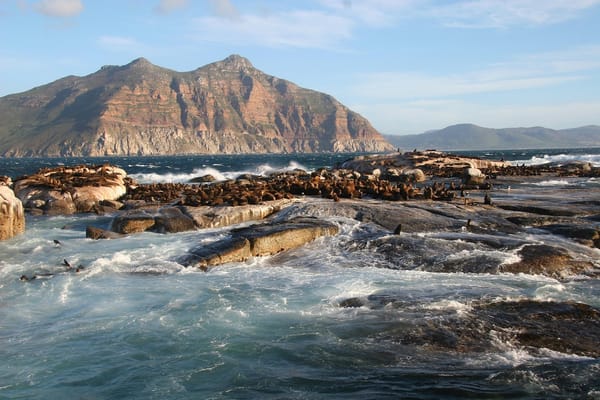Tuesday☕️

Trending:
- Ernesto Vázquez Reyna, the delegate of Mexico's Federal Prosecutor's Office (FGR) in Tamaulipas, was killed on August 4, 2025, in a violent attack in Reynosa, Tamaulipas. Reports indicate that Vázquez was traveling in a vehicle with his driver and an escort when assailants targeted it with fragmentation grenades and gunfire on Boulevard Hidalgo in the Las Quintas neighborhood, causing the vehicle to explode and catch fire. Witnesses and preliminary investigations suggest that Vázquez attempted to exit the burning vehicle but was fatally shot by the attackers, who used high-powered weapons. Authorities are treating the incident as a targeted execution, with no immediate claims of responsibility.
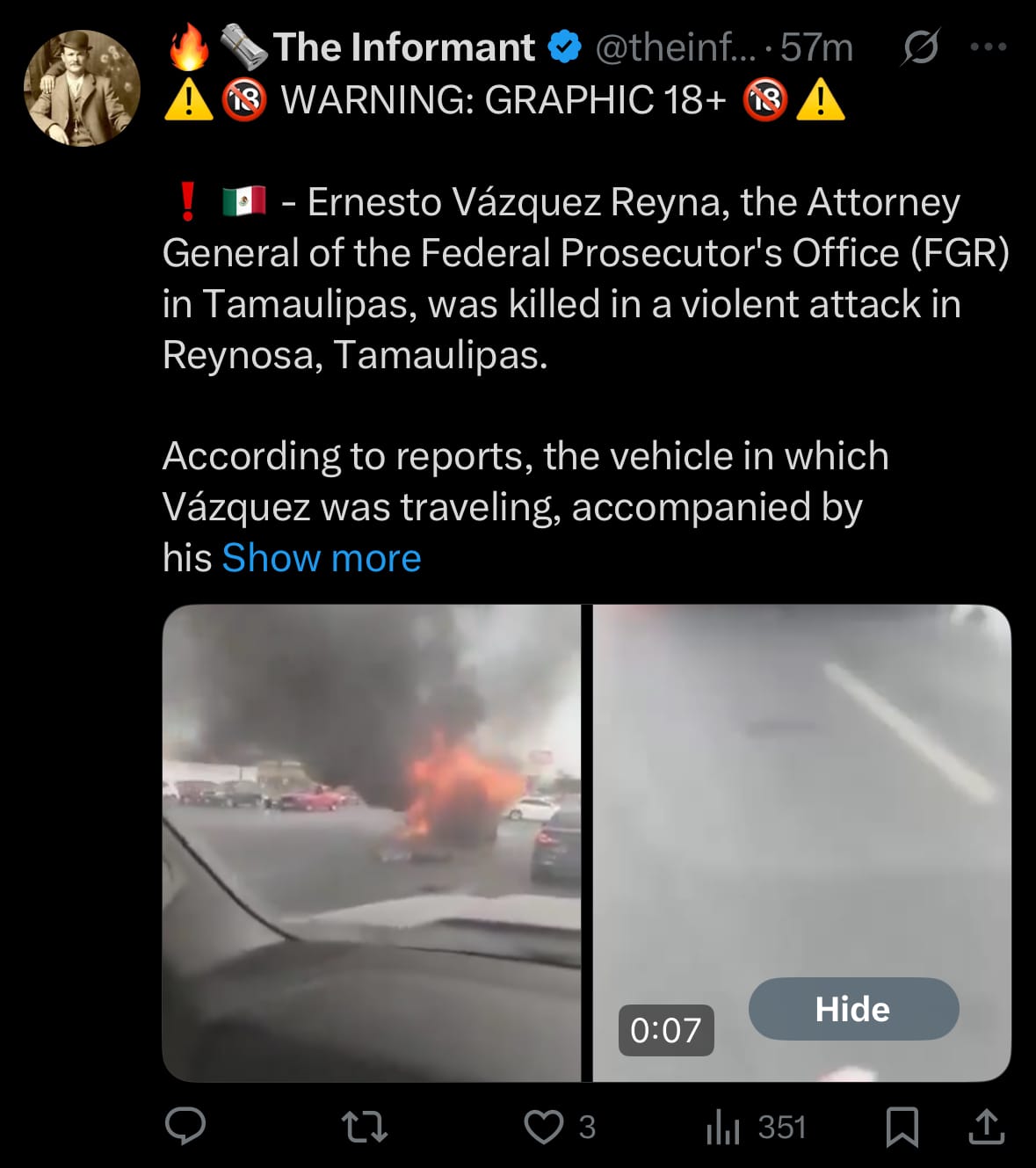
- The killing highlights the persistent security challenges in Tamaulipas, a state long affected by cartel-related violence and organized crime activities. Reynosa, in particular, has been a hotspot for clashes between rival criminal groups, primarily the Gulf Cartel and its splintered factions such as Los Metros, alongside the Northeast Cartel (a remnant of Los Zetas) and occasional incursions by the Jalisco New Generation Cartel (CJNG), contributing to a high rate of homicides and attacks on public officials. This incident adds to a series of recent violent events in the region, underscoring the risks faced by law enforcement personnel amid ongoing efforts by federal and state authorities to combat drug trafficking, fuel theft, and extortion networks.
Economics & Markets:
- Yesterday’s U.S. stock market:
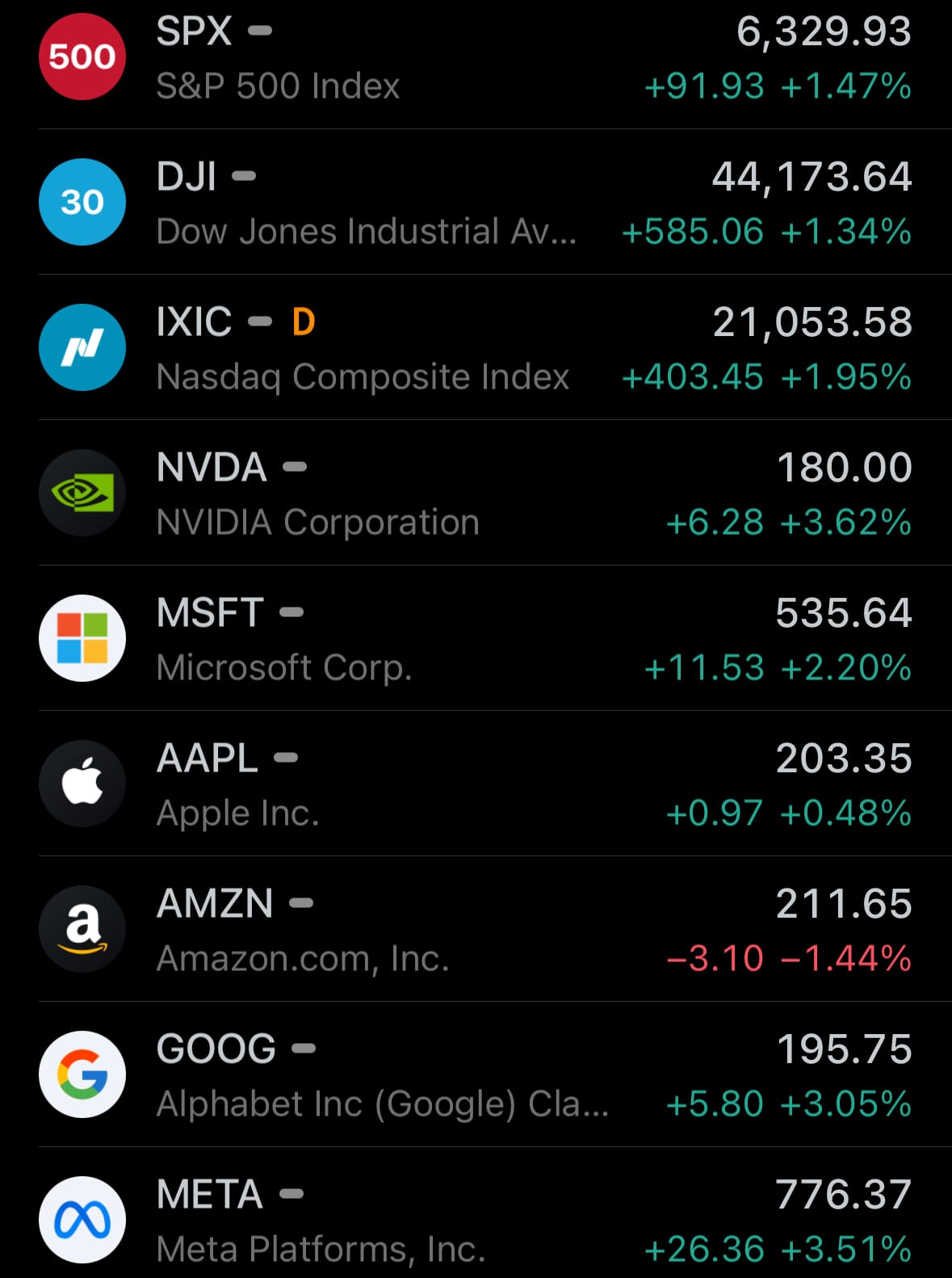
- Yesterday’s commodity market:
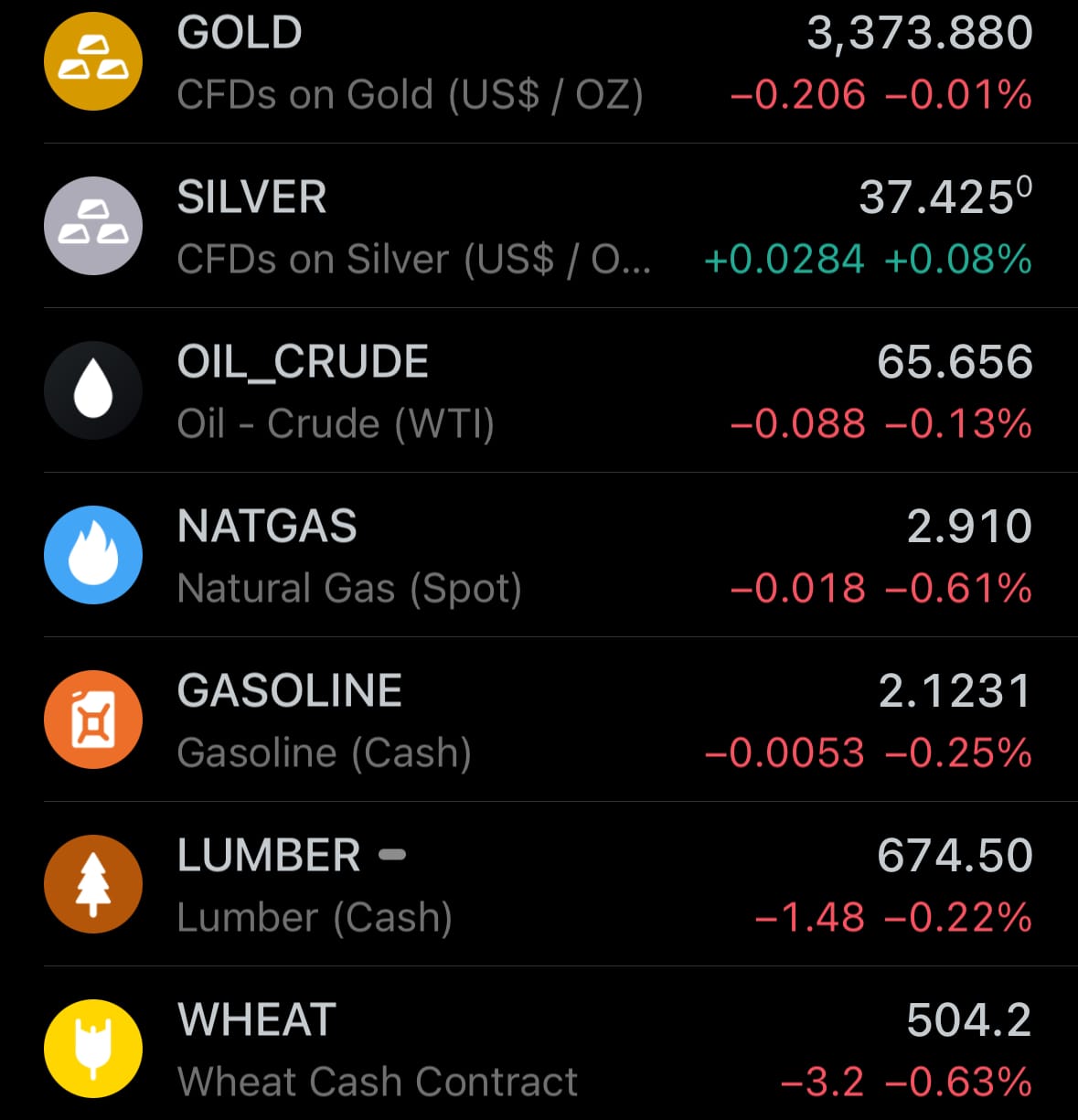
- Yesterday’s crypto market:
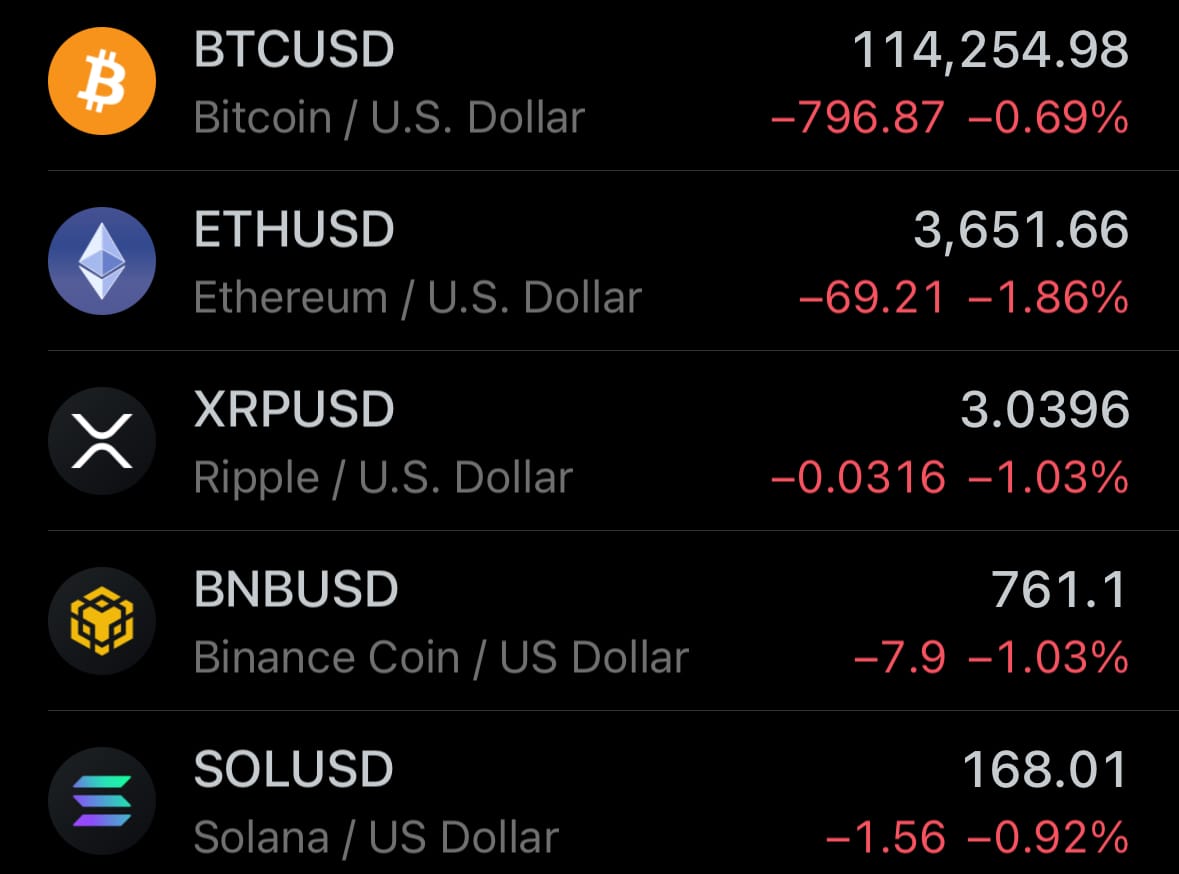
Environment & Weather:
- On August 5, 2025, Zhaoqing in Guangdong Province, China, experienced severe flooding from heavy rainfall, leading to notable disruptions and official interventions. On August 4, the area recorded 213 millimeters of precipitation over five hours, resulting in flooded streets, displaced vehicles, and extensive water accumulation. Official reports noted 54 instances of road collapses in adjacent counties like Fengkai and Deqing, with more than 300 individuals evacuated for safety. Local authorities initiated a level-IV flood emergency protocol, deploying response teams to manage issues such as electricity disruptions and structural impairments, with no confirmed deaths in Zhaoqing at the time.
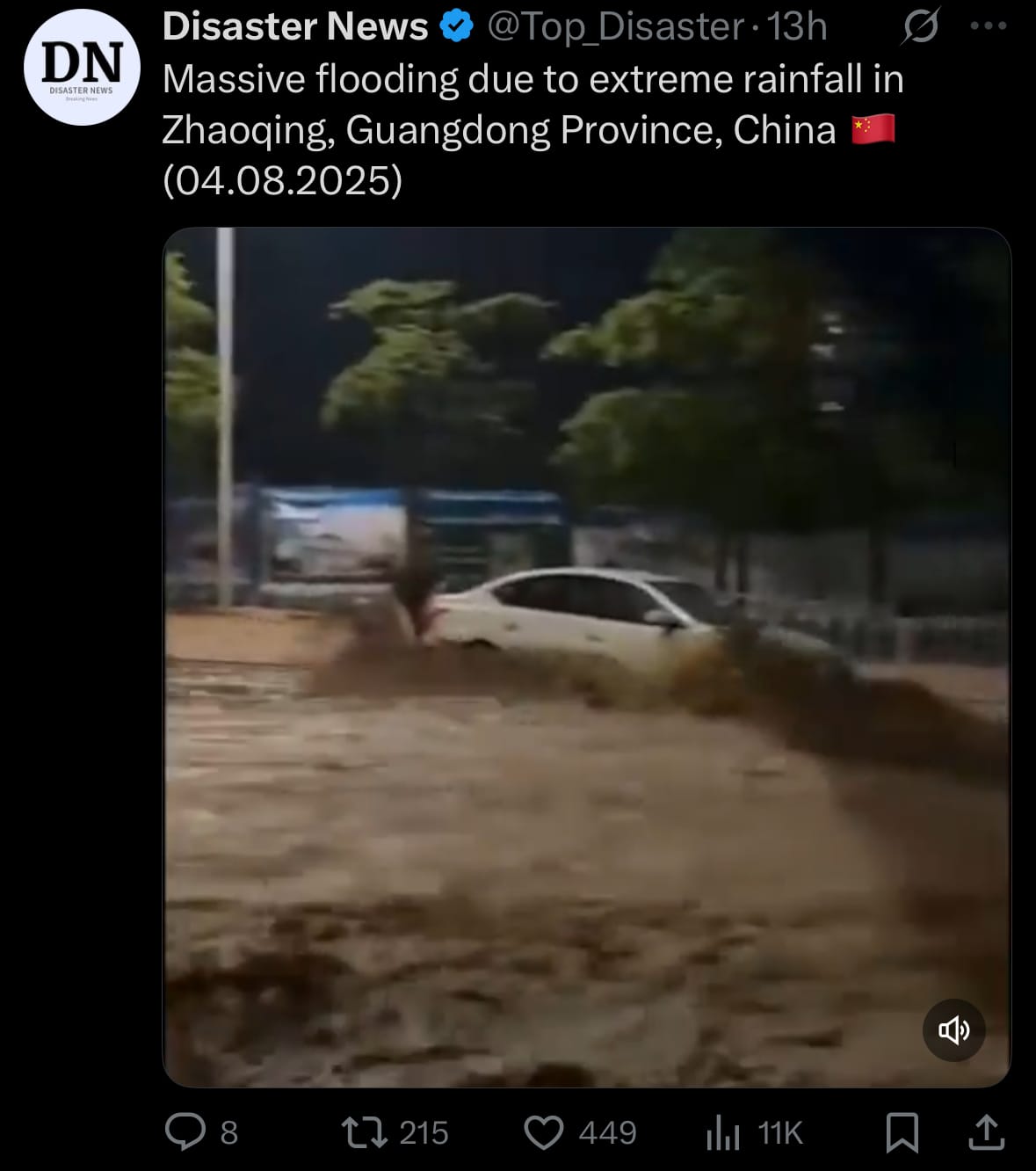
- This event aligns with widespread flooding throughout China in recent days, driven by continuous heavy rains and associated weather events. In northern areas, including Beijing and its vicinity, storms beginning in late July have caused at least 44 fatalities, predominantly among older residents in rural zones, and necessitated the relocation of over 80,000 people in Beijing, where infrastructure like subways and bridges was affected and power services interrupted. In Hebei Province, landslides from similar conditions led to four deaths and eight missing persons, while active flood alerts persist across several provinces, indicating sustained hazards from weather extremes impacting diverse regions of the country.
Space:
- On August 4, 2025, SpaceX conducted a Falcon 9 rocket launch, placing 28 Starlink satellites into low-Earth orbit as part of its satellite constellation expansion. Designated as the Starlink 10-30 mission, the rocket lifted off at 3:57 a.m. ET from Space Launch Complex 40 at Cape Canaveral Space Force Station in Florida. Following the deployment, the reusable first-stage booster, B1080, marked its 21st flight with a successful landing on the droneship Just Read the Instructions in the Atlantic Ocean.

- The Starlink satellites are intended to support broadband internet access with reduced latency, contributing to an existing network of several thousand satellites. No anomalies were noted during the launch or deployment phases, though minor delays preceded liftoff, potentially due to weather conditions or standard pre-flight checks.
- On August 4, 2025, China successfully launched the Long March-12 carrier rocket, deploying the SatNet LEO Group 07 mission, which consisted of a batch of low-Earth orbit communication satellites for the Chinese state-owned SatNet constellation operated by the China Satellite Network Group. The rocket lifted off at 6:21 p.m. Beijing Time from the commercial spacecraft launch site in Wenchang, Hainan Province. The mission proceeded without reported issues during ascent or satellite deployment.
Statistic:
- Largest public maritime transport companies by market capitalization:
- 🇨🇳 COSCO Shipping: $32.40B
- 🇩🇰 Maersk: $30.05B
- 🇩🇪 Hapag-Lloyd: $25.18B
- 🇰🇷 HMM: $16.86B
- 🇯🇵 Nippon Yūsen: $14.89B
- 🇹🇼 Evergreen Marine: $14.18B
- 🇭🇰 Orient Overseas Container Line: $11.63B
- 🇯🇵 Mitsui O.S.K. Lines: $11.29B
- 🇯🇵 “K” Line: $9.14B
- 🇭🇰 SITC International: $8.69B
- 🇭🇰 China Merchants Port: $8.36B
- 🇹🇼 Wan Hai Lines: $8.31B
- 🇲🇾 MISC Berhad: $8.14B
- 🇶🇦 Qatar Gas Transport Company: $7.36B
- 🇹🇼 Yang Ming: $7.08B
- 🇨🇳 COSCO Shipping Energy: $5.96B
- 🇺🇸 Kirby Corporation: $5.54B
- 🇧🇲 Frontline: $4.28B
- 🇳🇴 Wallenius Wilhelmsen: $3.86B
- 🇺🇸 Matson: $3.45B
- 🇶🇦 Milaha - Qatar Navigation: $3.40B
- 🇺🇸 Seaboard: $3.24B
- 🇸🇦 National Shipping Company of Saudi Arabia (Bahri): $2.89B
- 🇧🇲 Hafnia Limited: $2.80B
- 🇲🇨 Scorpio Tankers: $2.43B
History:
- The history of Mexican drug cartels traces back to the early 20th century, with opium production in areas like Sinaloa influenced by Chinese immigrants who introduced poppy cultivation techniques after migrating due to anti-Chinese policies in the United States. Early operations centered on small-scale marijuana and opium trafficking to supply U.S. markets, primarily managed by rural farmers in the Golden Triangle region encompassing Sinaloa, Durango, and Chihuahua. The contemporary cartel structure emerged in the 1970s and 1980s, led by figures such as Miguel Ángel Félix Gallardo, a former federal police officer who established the Guadalajara Cartel. This organization centralized control over cocaine smuggling routes in collaboration with Colombian groups like the Medellín and Cali cartels, transitioning from local production to extensive international transport. This shift was accelerated by U.S. enforcement efforts that closed off Florida-based routes, rerouting traffic through Mexico. Gallardo's 1989 arrest fragmented his network, giving rise to prominent entities including the Sinaloa, Tijuana, Juárez, and Gulf cartels, which intensified rivalries and conflicts.
- In the 2000s, cartel operations and associated violence intensified, especially following President Felipe Calderón's 2006 declaration of a war on drugs, which involved military deployments and resulted in more than 400,000 homicides by 2025 through territorial disputes and clashes with authorities. Cartels expanded their activities to include methamphetamine, heroin, and fentanyl manufacturing, while offshoots like Los Zetas—originating from the Gulf Cartel—adopted heightened brutality and diversified into areas such as extortion, human trafficking, and fuel theft. The Sinaloa Cartel, guided by leaders like Joaquín "El Chapo" Guzmán, grew into a major force, and emerging groups like the Jalisco New Generation Cartel (CJNG) arose from prior alliances, employing assertive strategies for expansion. Institutional corruption in Mexico, alongside sustained drug demand in the U.S., has sustained these networks, leading to mass displacement, enforced disappearances, and cartel influence over local economies. High-profile arrests, including Guzmán in 2016 and Ismael "El Mayo" Zambada in 2024, have prompted further splintering, creating more fragmented and unpredictable dynamics that continue to pose difficulties for law enforcement in Mexico and internationally.
Image of the day:

Thanks for reading!
Earth is complicated, we make it simple.
Click image to view the Earth Intelligence System:
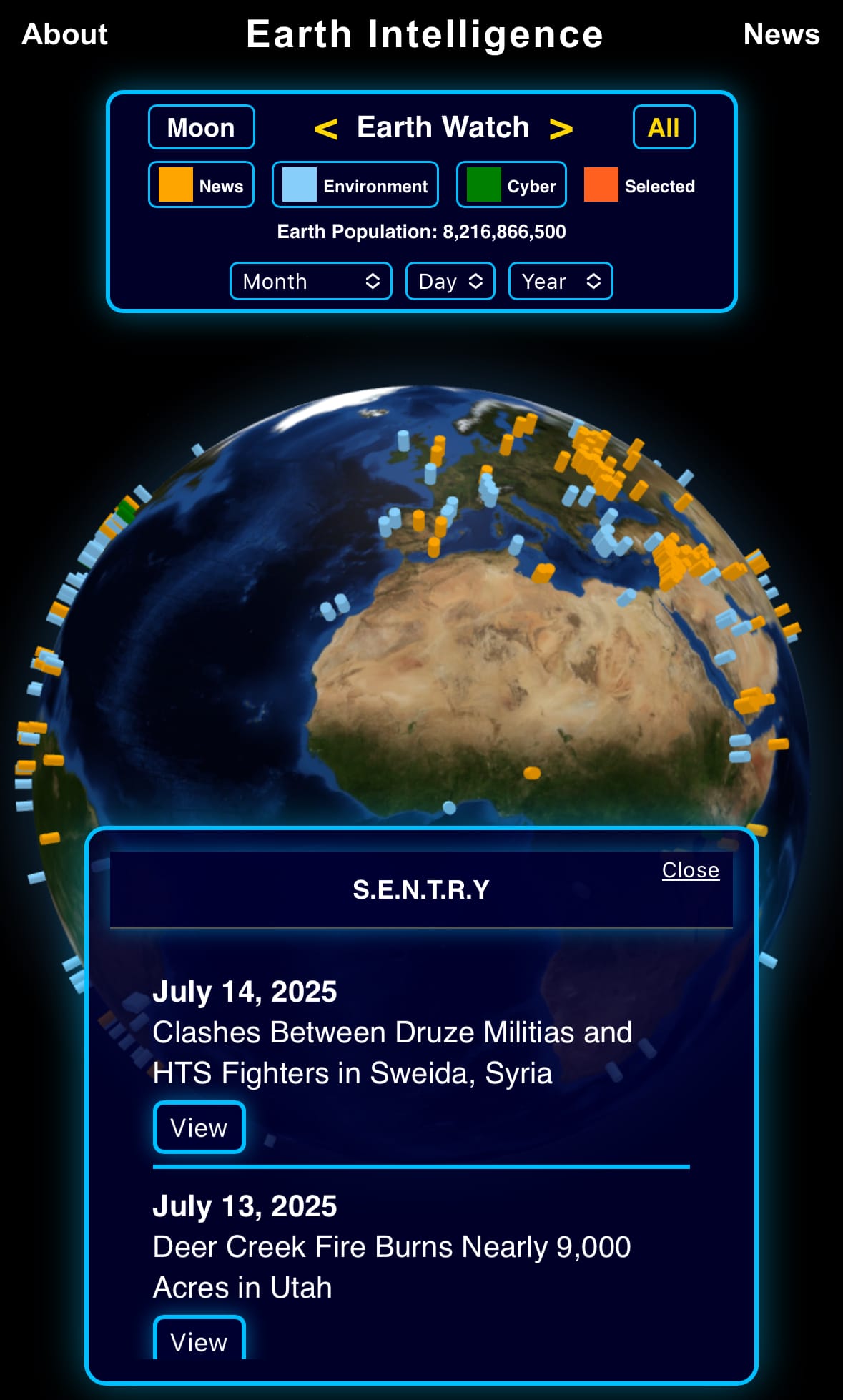


Support/Suggestions Email:
earthintelligence@earthintel.news

